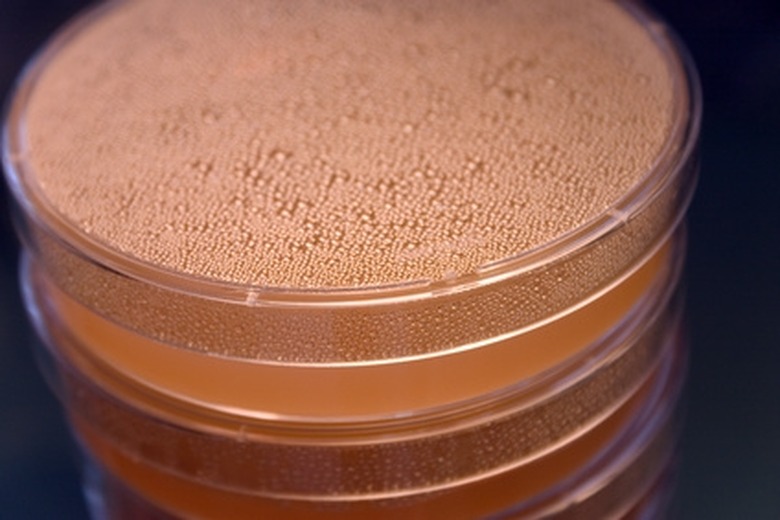How To Make Agar Plates
Agar is the gelatinous substance that sits inside the petri dishes used by scientists and students alike. Agar is the perfect substance for biological experiments as it holds up to bacteria and doesn't disintegrate easily. There are a number of ways to make an agar plate or agar-filled petri dish. You can purchase a specially prepared liquid, tablet or powder to facilitate the making of your own agar plate.
Process
Step 1
Begin by sterilizing the petri dishes. Accomplish by placing them in a bath of boiling water and allowing to dry upside down on a sanitized drying rack or lab work bench. If the Petri dishes are still enclosed in the original packaging, leave them until ready to use. For 500 milliliters (ml) of agar mixture, you can fill 25 average-sized petri dishes.
Step 2
Prepare agar powder by placing it in the microwave with the appropriate amount of water. The label should provide specific directions although 6.9 grams to 500 ml of water (or just a little more than two cups) is standard. For agar tablets, 10 tablets dissolved in two cups of water is standard.
Step 3
Treat bottled agar formula carefully by loosening the bottle cap (but not removing) before placing in the microwave to warm and soften into a liquid state. Sterilize the bottle after microwaving by placing the neck of the bottle over an open flame a few times to ensure any airborne germs are eradicated before proceeding to plate making.
Step 4
Place the petri dishes the right way up and crack but do not remove the lids. This is to prepare them for individual handling when the other hand is holding the agar mixture in a suitable pouring vessel such as a glass pitcher.
Step 5
Gently lift the lid of the petri dish with one hand and hover the lid immediately over the bottom dish to remove any chance of airborne germs entering.
Step 6
Pour an amount of agar liquid into each dish as you hover the lid as mentioned in the previous step. About 1/8 inch is a standard thickness for the liquid measure.
Step 7
Allow the agar to set into the dishes by leaving them on a flat, clean surface to dry in the natural room temperature. Secure lids once set and store upside down.
Things Needed
- Petri dishes
- Rack
- Agar powder
- Agar tablets
- Water
- Pitcher
References
Cite This Article
MLA
Popovitch, Trish. "How To Make Agar Plates" sciencing.com, https://www.sciencing.com/make-agar-plates-5563283/. 24 April 2017.
APA
Popovitch, Trish. (2017, April 24). How To Make Agar Plates. sciencing.com. Retrieved from https://www.sciencing.com/make-agar-plates-5563283/
Chicago
Popovitch, Trish. How To Make Agar Plates last modified March 24, 2022. https://www.sciencing.com/make-agar-plates-5563283/
